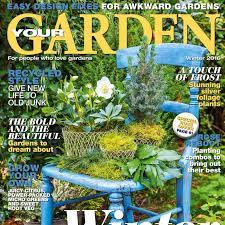A Walk on the Wild Side: 6 Benefits of Planting Wild Flowers in Your Garden

Last Updated on May 8, 2023 by
Gathering and arranging wildflowers from your Garden is an ancient practice that many cultures, gardeners, and wildlife have enjoyed for generations on end. Whether you simply love the vibrant pops of color or hope to attract pollinators into your natural habitat, planting a wildflower garden may be worth the time and effort.
Fortunately, colorful wild flower seeds aren’t difficult to find, allowing you to dive into curation in no time. Read on for six benefits of planting wild flowers in your garden.
Wild flower lawns help restore the planet
Wild flower lawns don’t use weed killers, pesticides, insecticides, and other chemicals that may poison your yard, garden pollinators, and wildlife critters. Instead, wildflower gardens protect your flora and foliage with restorative predators that naturally control pest populations.
Wildflower lawns also produce lush patches of food and shelter for birds with roots that grow deep into the ground hauling essential nutrients for wildlife to the soil.
Forget about maintenance
Are you tired of the dirty, unpleasant look of weeds on your lawn? Lucky for you, wildflower seeds turn any backyard into a relaxing zen-yard— just plant and grow.
Additionally, wildflower lawns are drought tolerant and require less water and mowing than your traditional garden. Plus, wildflower meadows adapt to any soil type and attract worm gardens by self-regulating their growth, even in nutrient-deficient soil.
Wildflowers are medicinal
For generations, medicinal wildflowers and certain seeds were used for herbal remedies, salves, and more. But today, you don’t have to trek into the wild to gather wild medicinal flowers. Instead, you can grow them in your front or back yard.
Common medicinal wildflowers herbalists enjoy growing are:
- Lemon balm aids cold sores
- Lavender treats skin disorders, burns, and bug bites
- Dandelion for digestive health
Plus, growing them in your yard allows you to learn about your natural environment by identifying new plants, butterflies, and insects and exploring how biodiversity works.
Contribute to biodiversity
Wildflower seeds grow into natural habitats that feed pollinators and birds, all while stabilizing your soil and contributing to the surrounding biodiversity.
Crocuses, clovers, dandelions, and buttercups grow well in lawns and provide pollinators with an excellent source of pollen and nectar to pollinators.
Enjoy your wildflower meadow
Although some wildflowers can have the same appearance as weeds, which quickly become invasive and spread easily, true wildflowers improve your air quality with fresh, natural scents.
Additionally, seed to soil annuals and perennials can add rainbows of color to a traditional garden with sounds of chirping and buzzing wildlife. If you’re planting in a small space, adding a wildlife border or fence will bring floral fragrances into your home.
Plus, the lack of mowing your lawn can support healthy growth for native grass species that offer safe habitats and food for butterflies.
Before you go
Whether you are planning a beautiful meadow to frame your favorite walkway, planting several acres, or simply looking for an alternative to the traditional garden, wildflowers have unending benefits.


